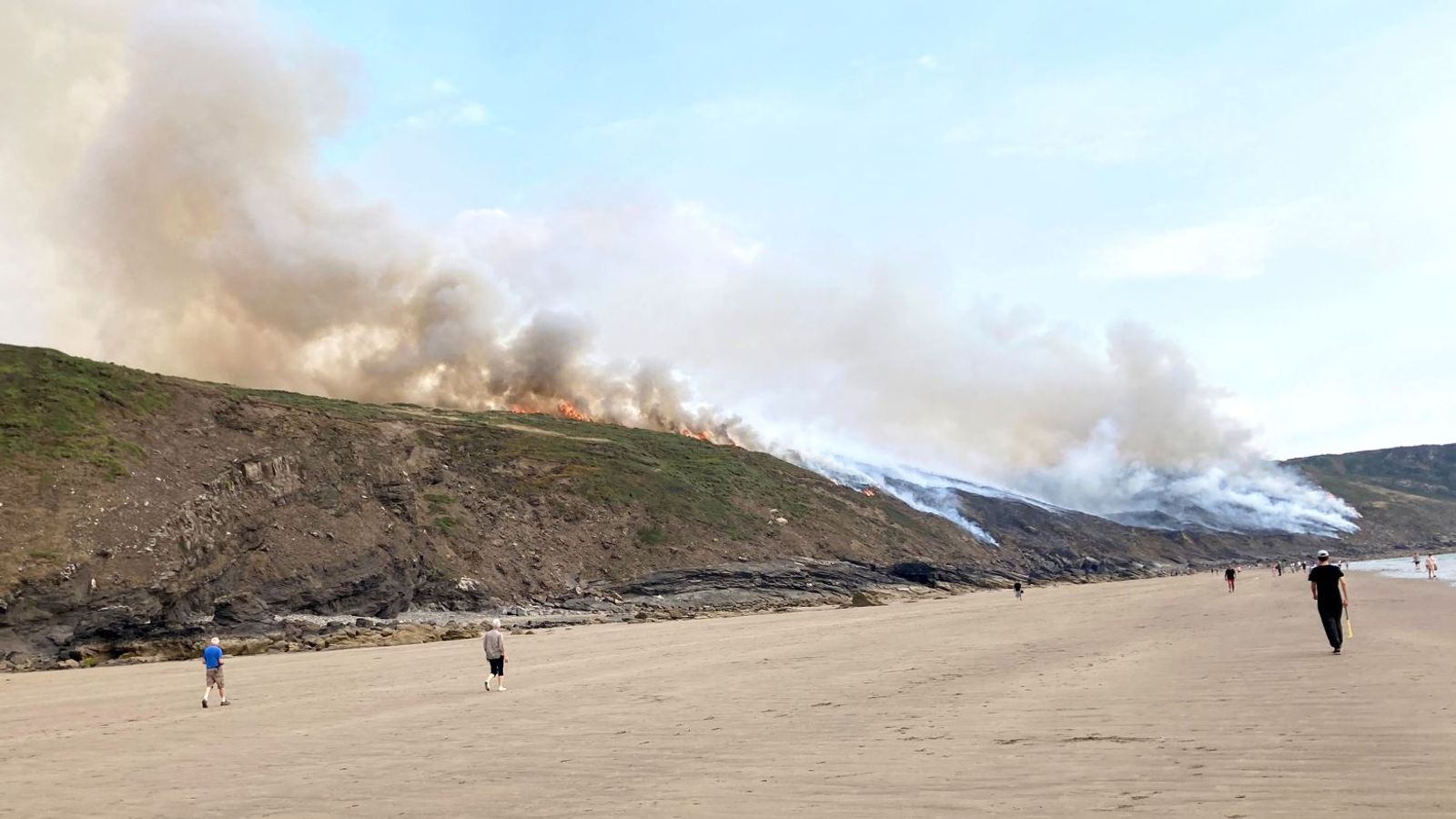Plummeting water levels have triggered an official drought in the southwest of Wales, as the region monitors the impact of last week’s extended heatwave.
Natural Resources Wales (NRW) says the threshold that triggers the status of a drought was met today, with the decision made alongside the government’s Drought Liaison Group.
The areas affected include:
• North Ceredigion
• Teifi
• Pembrokeshire
• Carmarthen
• Swansea
• Llanelli
• Neath Port Talbot
• Bridgend
Pembrokeshire and parts of Carmarthenshire are also facing a hosepipe ban, due to the decimation in water supply.
Natalie Hall, from NRW, said: “Prolonged dry weather can lead to drought when rainfall remains low.
“This can impact some of our most precious habitats and species as well as systems we often take for granted, such as our water supplies.
Logan Mwangi: ‘Serious concerns’ remain over council which had oversight of murdered five-year-old, inspectors find
Body of boy, 16, recovered from Salford Quays as police warn of ‘dangers of open water’
Former Wales rugby captain Ryan Jones reveals early-onset dementia at 41: ‘I lived 15 years of my life like a superhero and I’m not’
“We have decided to declare a state of drought in southwest Wales after it was clear the lack of rain and recent heat have put a huge strain on our rivers, reservoirs and groundwater levels.
“While certain parts of Wales may be experiencing rain, it can still take a long time to recover from drought, making water a precious resource.”
Just 65.5% of the region’s average rainfall fell in July, leaving river levels lower than expected for this time of year, according to the NRW, with the rest of the country experiencing its driest five-month period in 40 years.
In 2021, Wales used the equivalent of 356 Olympic-sized pools worth of water every day, but in recent weeks, demand has rocketed by 25%.
Experts say that any rain forecast will probably be in short, intense bursts, and unlikely to help the situation with a wet autumn and winter needed to ensure water levels rise again.





